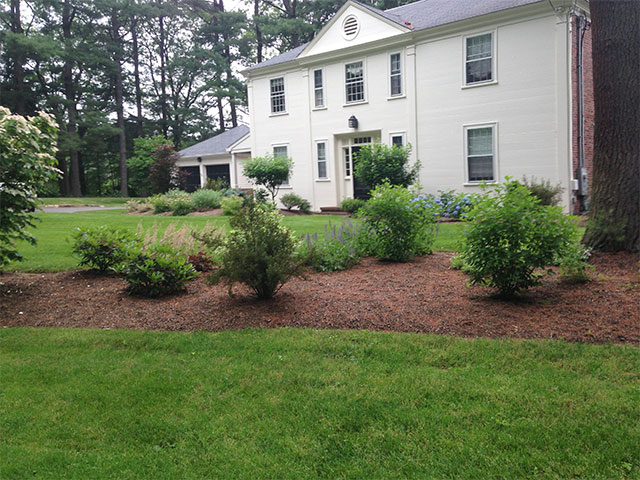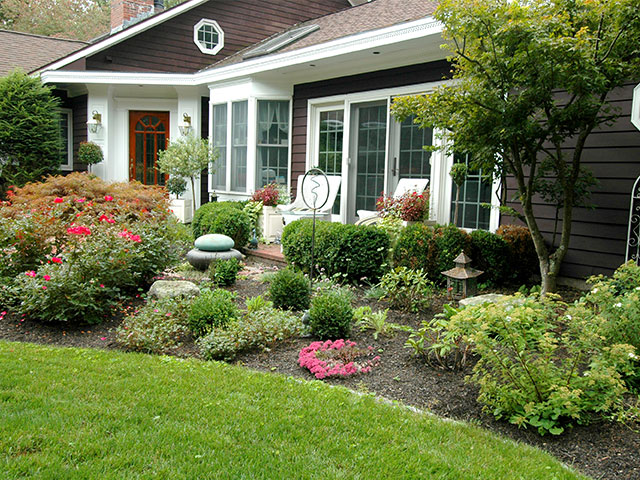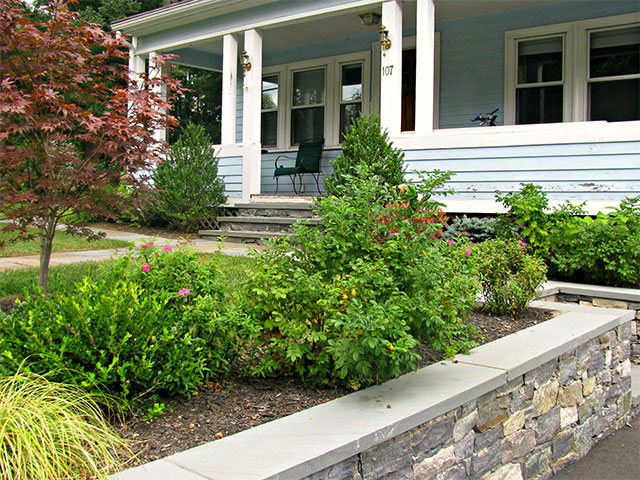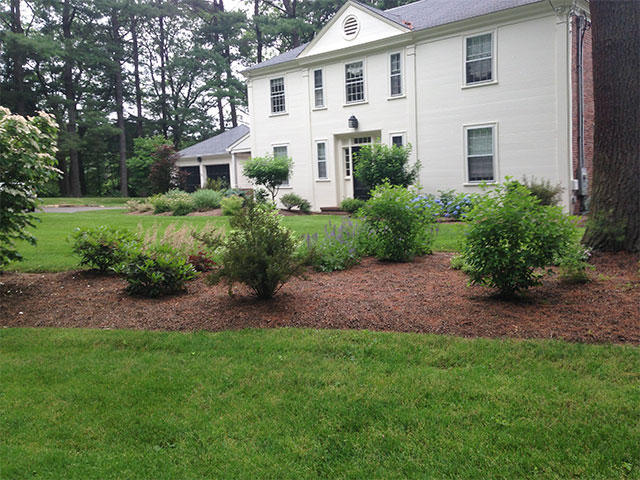A short, neatly-edged expanse of sprawling green grass is the ultimate idea of the American lawn. Unfortunately, the “perfect” lawn is more reminiscent of a chemically-treated golf course than a healthy yard that supports the environment around it.
Without large amounts of watering, pesticide and herbicide use, and constant application of fertilizer, those pristine green lawns are impossible to maintain. These lawns are not environmentally-friendly, nor are they a healthy place for children or dogs to play on. Follow the advice below to create an organic lawn that is both safe for your family and good to the natural world.

Hidden downsides of the “perfect” lawn
Most of the grasses that comprise those perfectly-manicured, bright green yards are not native to North America. Settlers brought many types of grasses and weeds to the eastern seaboard from Europe, the Middle East, and Africa during the 17th and 18th centuries. Because these grasses are non-native, they require a great amount of care to stay beautiful and green.
The American lawn causes more environmental damage than most people realize. Rainwater carries pesticides and herbicides into our sewer systems. Emissions from constant mowing pollutes the atmosphere, and viable wildlife habitat is lost to the great expanse of short, green grass. The damaging effects of the American lawn can be hard to see, but they are ever-present as people continue to cultivate these sports field-style grasses.

What to grow in Massachusetts instead of the traditional green lawn
Turning your lawn into an organic garden with native plants has many benefits. Don’t feel like you must have a perfect lawn. The first step is changing your mindset on what a healthy yard looks like. Minimize that plain greenscape and get creative while choosing more trees, flowers, vegetables, and shrubs to grow in your yard.
Here are some more tips
- Make the change gradually. Instead of tearing out your lawn and replacing it all at once, take little steps. Remove a small section of grass and install a small flower bed. Plant a shade tree in front of the house. Start on a section of your yard that you’ve been itching to change and bring in new plants you’ve wanted (ideally native ones). Very soon, as you make more and more changes, you’ll see beneficial plants take over as unhealthy grass gets minimized.
- Reap the aesthetic benefits of an organic garden. Help the environment with a biodiverse yard and organic practices to keep it healthy and pest-free. Use pretty ground covers like strawberries in place of grass. More trees will provide more shade during the summer months and flowers will provide sweet-smelling blooms all year-round.
- Switch to organic practices. If you don’t want to remove the grass in your yard, there are still ways to reduce your impact on the environment. Use organic pesticides, fertilizers, and weed-control methods to keep your yard safe for children and pets to play on. Maintaining a large lawn organically can be difficult, but the environmental rewards are well worth the effort.

Create a more environmentally-friendly lawn in Massachusetts with landscape design specialists
The “perfect” American lawn causes more damage to the environment than any aesthetic benefits it may provide. Bring more beneficial plant species into your yard to create a healthier place for your family and pets to gather and play. If you need help replacing the grass in your lawn with plant species that support the environment around you, contact the experts at Moodscapes for assistance today.

Moodscapes LLC is an organic landscape design and service company with a focus on helping you extend your life outdoors to enjoy activities on your own, as a family and with friends. We create opportunities for you to commune with and find joy and peace in nature and to live in an ecologically friendly and healthy environment. Please explore our landscape services and the portfolio that demonstrates many examples of our work.





